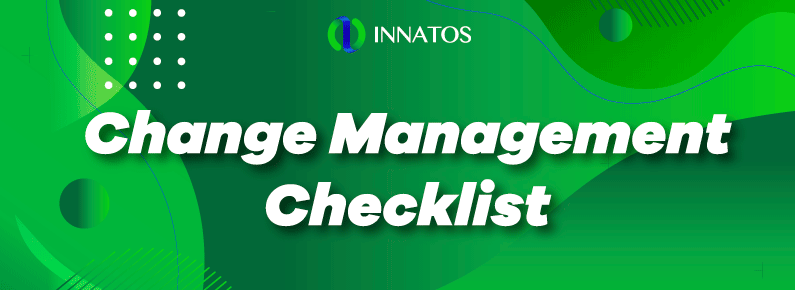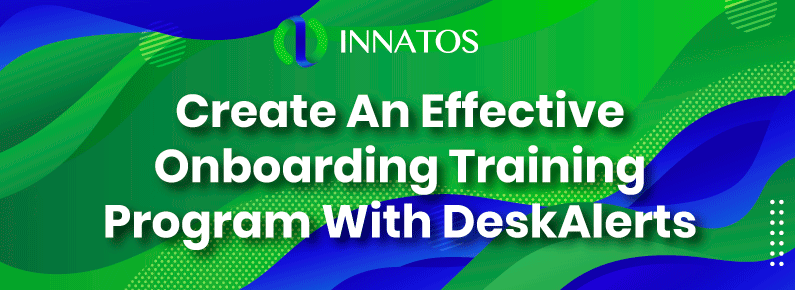Change Management Checklist
Change Management Checklist. There are many reasons why your organization may need to go through a change process – generally out of some sort of necessity. It might be for financial reasons, because of regulatory framework changes, because of a merger or acquisition, or because you need to change direction as a business to remain competitive, viable, and solvent.
Change can be difficult. There’s no quick fix solution. You can’t wave a magic wand and have everything transform into something new easily.
Change is a process that needs a lot of hard work, planning, dedication, and commitment to carry out. In fact, many businesses get it wrong – some 70 percent of change initiatives globally fail every single year.
The following processes and systems should be followed to successfully bring about change in your organization:
Planning:
 Establish a project team with governance and other structures.
Establish a project team with governance and other structures.- What is the outcome you would like to achieve? How will you get to this point? Establish your key deliverables as well as terms of reference.
- Create a business case for the changes you would like to make.
- Select a proven change management methodology that will help you to bring about change in your organization.
- Clearly set out your plan in an easy-to-follow format.
- Determine if there are any obstacles that could prevent you from achieving your goals and if appropriate devise mitigation strategies.
- Determine if there are any risks and create mitigation strategies
- Ensure that you have the resources necessary to implement your plan.
- Determine if there are any costs involved and if so, dedicate time to planning a budget.
- Identify who is going to be affected by the change – map your stakeholders.
- Seek ways to involve those affected by the change.
- Assign responsibilities to relevant staff members.
- Set timelines.
Leadership
- Ensure that all members of your organization’s leadership team thoroughly understand the goals and objectives of organizational change and can talk to employees about it.
- Identify “sponsors” or “champions” of change who can help to lead initiatives and be the public face of your change campaign.
- Develop your sponsors’ and champions’ understanding of roles and responsibilities as well as the change initiative
- Ensure your sponsors and champions are able to deliver your key messages and communicate effectively
- Set clear expectations of your managers about the role they will play in the success or failure of your change campaign.
- Middle managers can help to play a crucial role in identifying and managing any resistance to change among the staff they supervise – they will need coaching to help them with this role.
 Communication, Change Management Checklist
Communication, Change Management Checklist
- Develop a communication plan
- Identify the key messages about your change initiative and the process
- Identify audience groups
- Create appropriate information resources in different formats, and for different audiences if appropriate
- Determine the communication channels that you are going to use
- Identify who the appropriate sender of any communications should be (eg: CEO, supervisors, project sponsor, other?)
- Determine the frequency of communication
- Assign responsibility for communication tasks
- Create mechanisms that will allow two-way communication
- Monitor and evaluate the success of your communication strategy
Stakeholder engagement
- Identify any stakeholders, internal and external, who could be affected by your change initiative.
- Consult and engage with your stakeholder groups to determine how they feel about the change and what work needs to be done to get them ready to embrace the change.
- Facilitate the sharing of information among stakeholders – consider events, briefings, and other activities as part of or in conjunction with your communication strategy.
- Give opportunities for two-way communication.
- Record any feedback or issues that arise when you consult with your stakeholders.
- Report progress to stakeholders.
Cultural change, Change Management Checklist
- What are your desired values, behaviors and other organizational culture attributes that you want to see once your change is implemented?
- Ensure you are clearly articulating the link between the new behaviors and the ongoing success of your organization.
- What are the strengths and weaknesses of the existing workplace culture (or cultures if you are going through a merger or acquisition)?
- How can you put these cultures together (also if going through a merger or acquisition?).
- How can you facilitate your employees to engage on a social level to build culture?
- Are there any training needs that will assist with this?
Training
- Evaluate what training and development will be required as a result of your change initiative. Do you need to retrain your entire workforce or just those who are engaged in a specific role?
- Plan your training sessions in a way that you can cater for everyone with minimal disruption, eg: staggering over multiple days.
- Assess your employees after training and offer follow-up training if necessary.
- Include this training in your onboarding process for new employees.
- Set the expectation with managers and supervisors that they will have a role to play in coaching their direct reports during the change process.
- Prepare these managers to be able to answer questions about the change process and to explain what is new.
Evaluation, Change Management Checklist
- How well do your employees understand your messages about your change?
- Do you have metrics in place to help with the evaluation process? If so, what are they saying?
- Has there been resistance to change?
- If there has been resistance, how has it been managed?
- What feedback have you received from employees?
- Have you conducted any pulse or benchmarking surveys to determine engagement and morale levels?
- What have you learned as an organization from the process?
- What improvements could you make to this process?
- What are the next steps?









Leave a Reply
Want to join the discussion?Feel free to contribute!